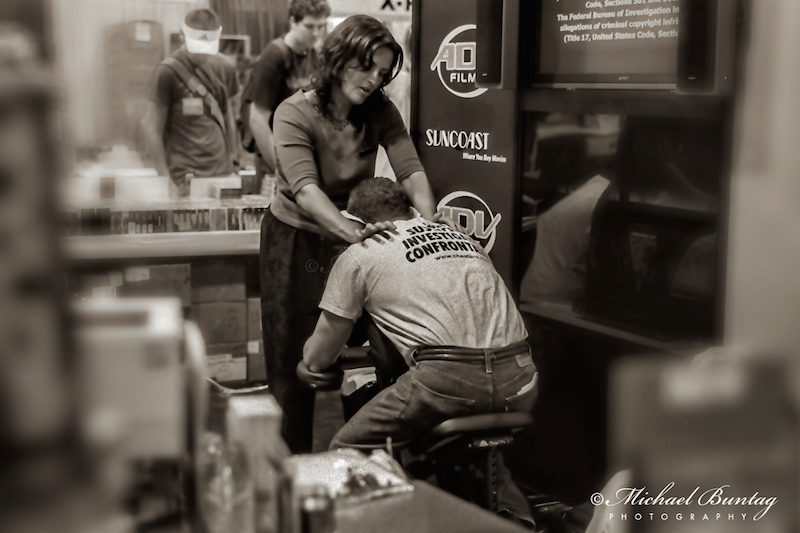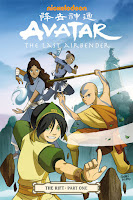Story: Darren Aronofsky, Ari Handel
Art: Niko Henrichon
Letters: Nicolas Sénégas
Design: Tom Muller
The Biblical myth of the Flood is a dark tale about an all-powerful but petulant god who regrets creating humanity and decides to drown them all in a worldwide deluge. But he makes an exception for
Noah and his family. Noah himself barely mutters a peep as he carries out God's commands without fail, like any trusted servant. God's act of universal destruction serves to complement the Genesis story of his creation of the world. But In
Darren Aronofsky's retelling, God is absent. The psychodrama instead falls on Noah as he struggles to understand the deity's will, which he believes is being communicated to him through visions so cryptic they often leave him conflicted about their true meaning. His crisis of faith becomes the focal point in an ambitious story that attempts to weave ancient myth, medieval theology, and modern science into a heavy handed morality tale about human greed and environmental despoilation.
While the
graphic novel functions as a standalone story, it's interesting to see how it compares to the film. Noah is humanity's first vegan/eco-terrorist/doomsday prepper, disapproving of civilization's wasteful practices and figuring out that the world is going to end. He's even more imposing in the comic, recognized by others as a great warrior and mage. Aronofsky and co-writer
Ari Handel teamed-up with artist
Niko Henrichon for the comic well before the film was produced, so it's visuals bear almost no resemblance to the film. Noah is drawn as a cape wearing, long-haired, square-jawed heroic type who wouldn't look out of place within a
Robert E. Howard fantasy novel or a
Thor comic. His appearance takes on a more sinister aspect down the line as he evolves into a full-blown religious zealot.
But the people Noah actually terrorizes are his own family, whom he's already sequestered from society when the story begins. God's reticence towards Noah in Genesis is translated in this humanistic adaptation as Noah's confusion as to whether God (dubbed the "Creator") intends for humanity to survive or go extinct. Like in the film, his increasing conviction that Original Sin has made them unworthy of the the former creates a rift with his family. And his behavior is far more extreme in the comic. At one point, he even sets the animals of the Ark against them when they defy him. This Noah takes no prisoners.

Henrichon's antediluvian setting is also visually striking. One of the underwhelming things about the film was its subdued palette suggesting a burnt out, featureless, post apocalyptic wasteland. Not one standing building is to be seen, only crumbling ruins. In contrast, the comic feels more primordial and more alien. The stars are so close and bright they shine even during daytime. Early in the comic, Noah travels to the dystopian metropolis of Bab-ilIm - "A city so vast it took a planet of spoil to stuff its ravenous maw" - and gazes upon its legendary tower. Its byzantine structure referencing both ancient temples and futuristic skyscrapers.
One of the strengths of the graphic novel is that Henrichon has more space to mould this fantastic world, from the exotic megafauna that populate it, to the mysterious
Watchers - the
Nephilim of Genesis, to Noah's shamanic grandfather
Methuselah. Henrichon's designs are usually more grandiose than anything used in the film.
The drawback though is that the story becomes bloated in its attempts to cultivate its many parts. Not only is Noah racing to complete the Ark before the rains come, he's fending of hordes of refugees from Bab-ilIm led by the violent
Tubal-cain, enlisting the Watchers to his cause, keeping his increasingly doubtful family in line, all while trying to decode the will of the Creator. The result is that the comic has not one, but several climactic scenes piling on top of each other.
The one area where Henrichon clearly falls short as an artist is in his character designs for Noah's family. They aren't written with very distinctive personalities to begin with, and after awhile, they all even morph to look rather interchangeable. This is where the film's cast does a better job in fleshing them out, particularly
Emma Watson as long suffering daughter-in-law
Ila and
Logan Lerman as the much abused middle son
Ham.
Both versions ultimately flounder from wanting to have its cake and eat it. Is the story aiming for spiritual transcendence or exposing the folly of blind faith, or both? The narrative doesn't quite cohere. In an important scene, Noah recounts the Genesis creation story to his family. His words are overlaid over a montage of images illustrating the Big Bang, the formation of the first galaxies and stars, the birth of our solar system, and the evolution of life from organic molecules all the way to primates. It's a provocative way to illustrate the tale. Although in this case the film's use of strobe effects and digital imagery is way cooler than Henrichon's still images, which feel kind of textbook in comparison.
In contrast to this allegorical interpretation optimized to coexist with the prevailing scientific world view, Aronofsky takes the story of the Flood at face value. So we still get the usual imagery such as the procession of the animals into a gigantic wooden box, or a deluge that blankets the entire world while drowning everything on land, which presumably includes a lot of plant and animal life as collateral damage for humankind's folly. We still have to accept the bizarre premise that an Ark could restore the planet's biodiversity with only a tiny sampling from each species and isn't just an idiotic scheme cooked up by a deranged individual. Given Aronofsky's monomaniacal portrait of Noah, it's a pretty tough sell.























